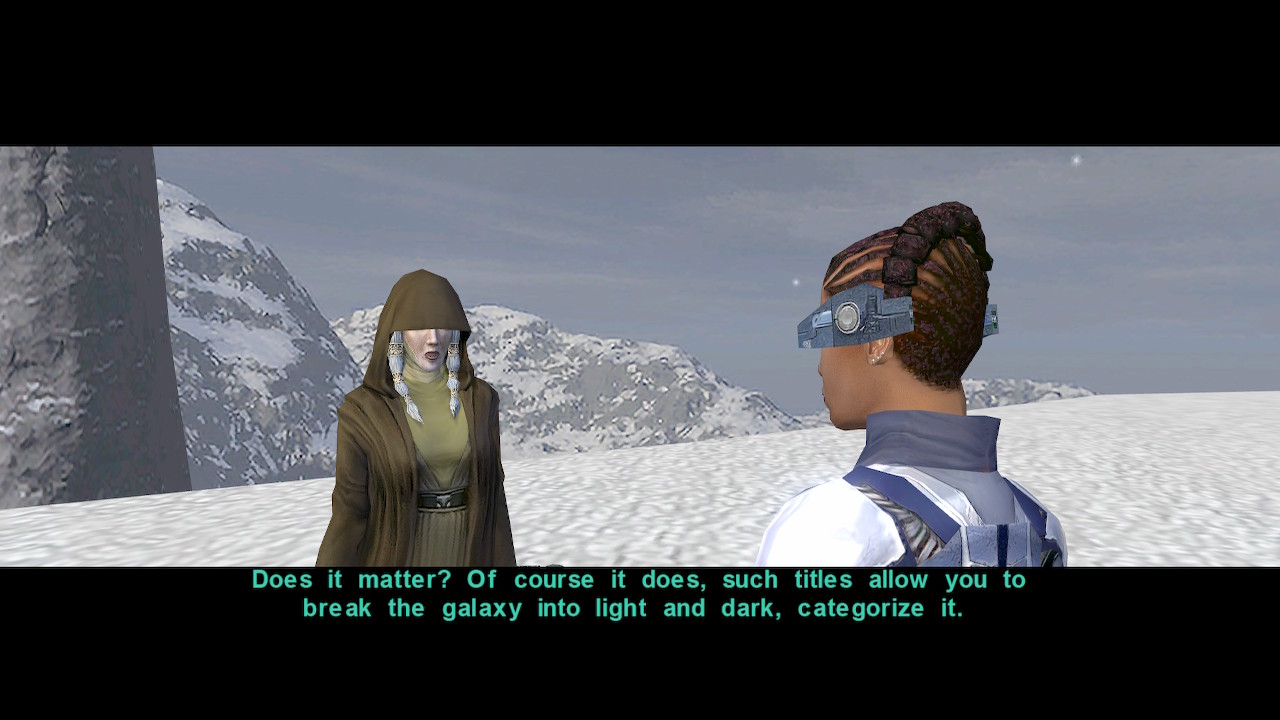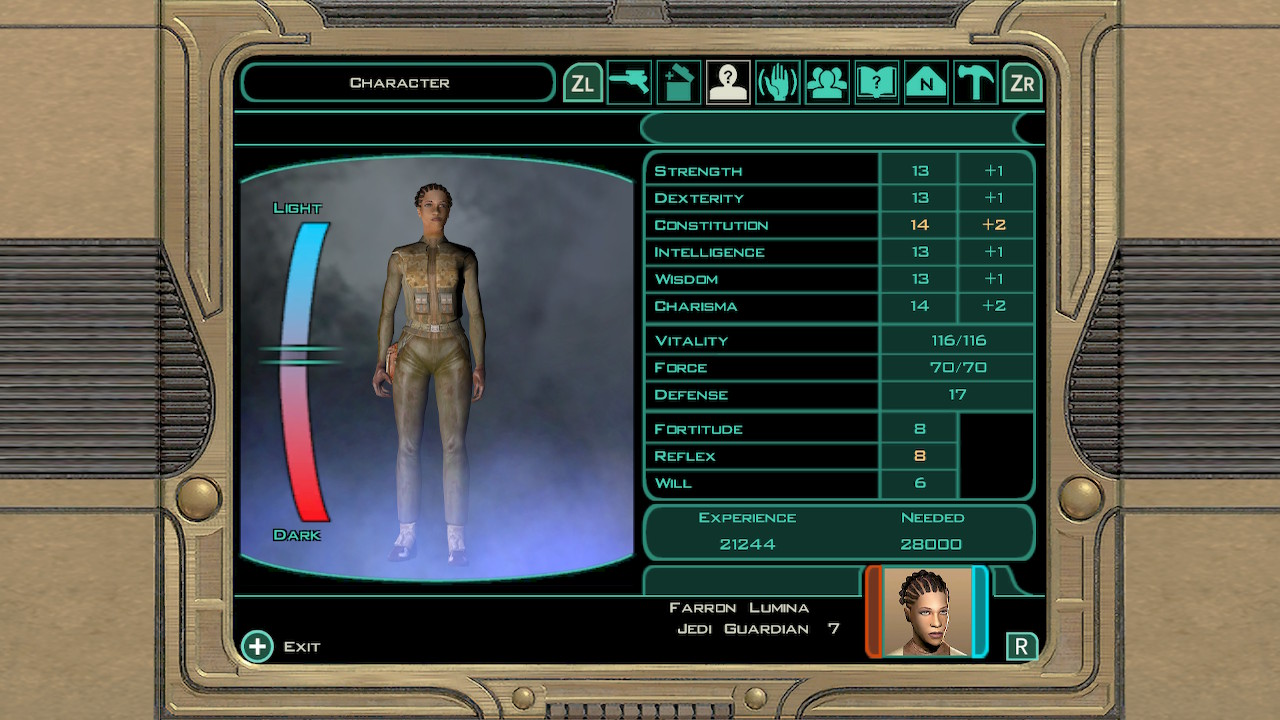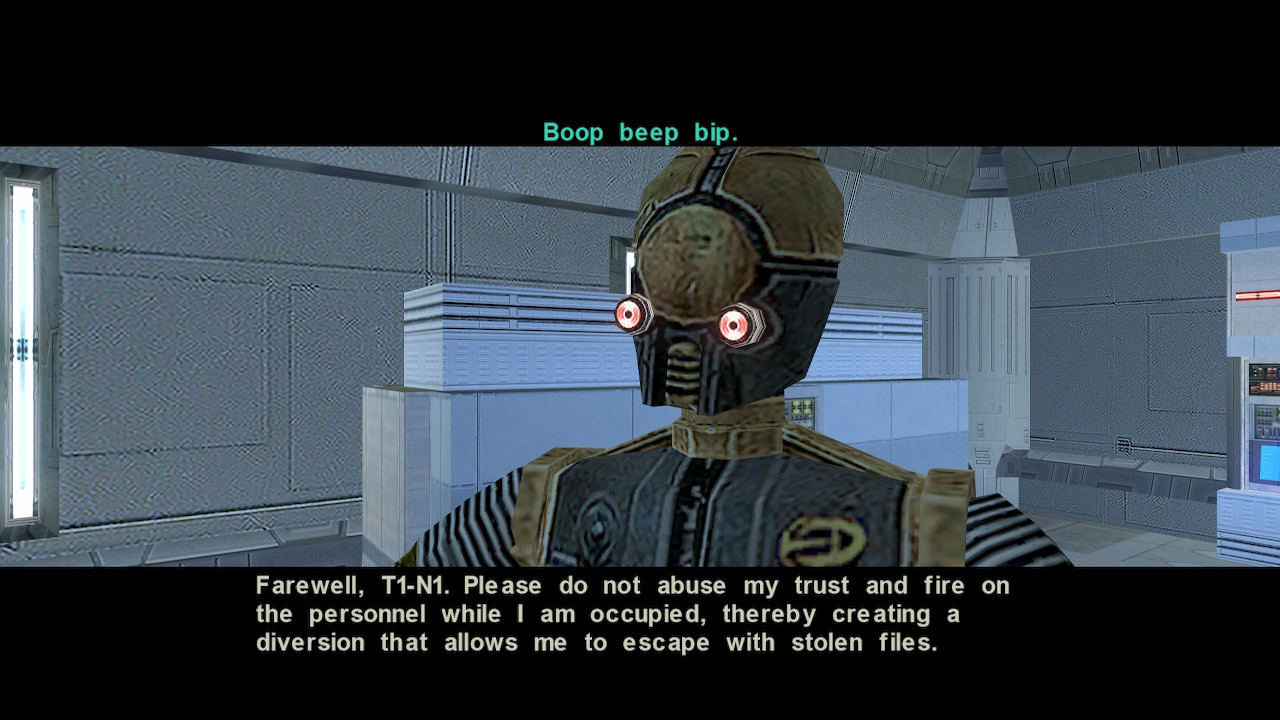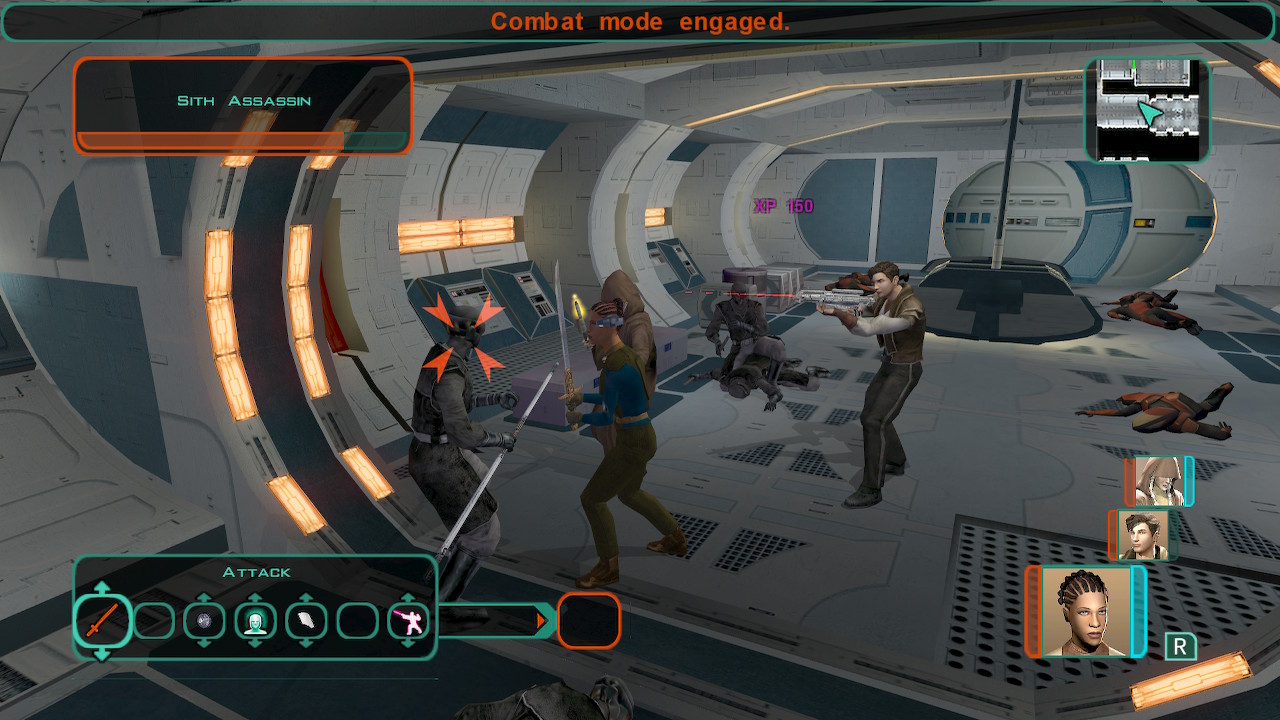Echoes are curious things: subtle, tiny whispers reverberating throughout the edges yet insistently powerful at the right frequency. Like the echoes often discussed in its plot, Star Wars Knights of the Old Republic II: The Sith Lords leaves an impression. However, this initial base version of the RPG released on Nintendo Switch is more like a whisper fading into the emptiness of space rather than the reverberating roar it could so easily have been.
The Sith Lords takes place only a few years after the events of the first Star Wars: Knights of the Old Republic, which have become known as the Jedi Civil War. The last of the Jedi have gone into hiding due to a mysterious new threat that shows no qualms about killing entire planets to get at them, while the Republic is stretched far too thin and struggling to maintain even a semblance of order in a galaxy far, far away. A former Jedi, a lone exile who lost their connection to the Force after following Revan and Malak in the Mandalorian Wars, wakes to a dangerously deteriorating situation on a mining colony in the Outer Rim. Players take on the role of this Exile as they soon find themselves neck-deep in a fight that spans numerous worlds and could very well affect the fates of every living creature in the known universe.
I was quite impressed with the Switch port of the first Knights of the Old Republic, so I was eager to dive into the Obsidian-developed sequel. Those who’ve played the prior BioWare title should feel at home with KOTOR II as soon as the sweeping opening credits begin since Obsidian clearly went with the “if it ain’t broke, don’t fix it” mindset when it came to the graphics and narrative presentation. The title resembles its predecessor in both areas, which in turn helps give this sequel that distinctive Star Wars cinematic feel. Obsidian’s mindset seems to carry over into The Sith Wars‘ gameplay, as many of the core mechanics seem to have survived the transition between developers.

As in the first KOTOR, players create their chosen Exile, placing points into various statistics and abilities as they gain experience and level up throughout the game. As you progress through the narrative, the Exile interacts with other characters while deciding on their next course of action, which in turn impacts how story scenes play out. The Exile has the spaceship, the Ebon Hawk, at their disposal, no doubt a familiar vessel to fans of the first KOTOR. They gain party members as they travel from planet to planet, and these party members have their own levels to gain and abilities to tailor to your liking. Like in the first game, you can equip weapons and armor pieces to each person and droid in your party, and you also collect or buy items as you advance the plot. The game pauses whenever enemy targets are spotted to help you prepare your initial combat strategy, another returning gameplay feature from the first KOTOR. You control one person in the party at a time but can switch between the three active party members rather seamlessly should you need to. Occasionally, you might get to hack (slice) a computer, remove mines, or repair and activate droids while out on the field. The gameplay is certainly dated in terms of how stat numbers still determine fight outcomes, but otherwise, it is well-rounded and easy enough to get the hang of.
Of course, one of the biggest draws of KOTOR and its sequel is in getting to gain power as a Jedi. The Exile earns Force alignment points vying towards the Light or Dark Side depending on actions and missions taken over the course of the game. This helps determine the type of Force points you get when you level up, with some special abilities relegated to either the Light or Dark Side. Many party characters can eventually gain access to specialized Force abilities if you raise high enough influence with them, which is achievable by doing or saying things they react favorably to during the narrative. Having access to the vital Heal ability is great, but I found that some of the offensive skills of the Dark Side, like Force Scream or the destructive Force Storm, can make even more Light-focused runs go smoothly!

This ability to “blend” the two sides of the Force together in a symbolic sense is perhaps KOTOR II‘s most significant strength from both a gameplay and narrative stance. Truth be told, there are many instances in The Sith Lords in which I feel the plot and its characters are actually stronger than its predecessor’s. The biggest example of this is the moral ambiguity at play throughout the game: the first KOTOR often suffered from the Dark Side responses being so cartoonishly evil that choices often amounted to “kick the puppy, hug the puppy.” KOTOR II does a better job painting its choices in shades of gray. What seems like the “right” thing to do in a given situation can have negative repercussions later on down the road, while a “darker” choice might actually have validity behind it. Do you hoard the medicine on one station when other worlds desperately need it? Do you give someone much-needed credits even if it might potentially result in violence towards them later on? Should you side with invaders if it keeps the native population from suffering a long-winded and painful conflict? Those are just some examples of scenarios the game presents, and I appreciate how many of the moral choices this time around weren’t quite so clear-cut.
The Exile’s story—merely being at an opportune place at an opportune time and the concept of Force Sensitive people outside of Jedi training— intrigues me, bringing to mind elements of Star Wars: The Last Jedi (easily my favorite movie of the latest Star Wars trilogy). I love the political machinations at work throughout the planets you visit and how cleverly the sequel tries to give players input on how the original KOTOR ultimately played out without relying on carryover data. There’s a bit more humor to be found too, and the party members all have great personalities and interesting backstories if the player explores them. Standouts in the cast include the enigmatic mentor Kreia, the compassionate mechanic Bao-Dur, the scoundrel Atton, the bounty hunter Mira, and the Sith servant Visas. Mad props to even the droids (beyond just the murderous HK-47) having more of a narrative presence this time around! I was quite impressed by a particular returning character from the previous game playing a more memorable role in this story, although I shall refrain from naming them due to spoilers.

For the most part, the game’s visuals look good, albeit dated. The settings fit the Star Wars universe quite well, and I like that the battle UI has been tweaked from the previous game. Some cutscenes look far more gritty and dated than others, though, and the visuals often jump to odd angles or seem patched together crudely, especially in the final portion of the game. The Switch also seems to struggle with the more action-oriented FMVs, as that was when I found software errors were most likely to occur. The musical score is excellent: grand and sweeping as is befitting a Star Wars title, with equally top-notch and atmospheric sound effects and voice acting.
At this point in the review, it seems like KOTOR II has all the makings of a stellar game in much the same vein as its prequel, perhaps even more substantial in some areas. Unfortunately, the game clearly had a rushed development cycle when it was initially released and suffers from quite a few setbacks as a result. There is a rough, unfinished, and choppy quality in many cutscenes that takes away from their impact. This could’ve theoretically been overlooked as “rough patches” if it was just a few scenes here or there, but the game’s final act following your planet-traveling adventures devolves into something of a hot mess. Scenes are spliced together in a crude piecemeal fashion and sometimes in ways that don’t make sense, feeling inexplicably rushed as far as closing plot points and their resolutions are concerned.
Meanwhile, the dungeon areas themselves and the final fights feel dragged out. Aspyr has promised to release a free DLC in the future that restores the game’s cut content and expands upon the plot and ending, but until that happens, you’re left with a game that starts with a slow-but-strong beginning and a feeble finale. There’s a promise of greatness, but it currently isn’t delivering on its potential.

That previous paragraph doesn’t even cover the Switch port issues themselves. Expect software error closing messages to occur regularly as you progress the narrative. I got into the habit of frequently saving since they seemed to happen consistently without warning. During my initial playthrough, you couldn’t even get past the game’s Basilisk sequence without utilizing a cheat menu warp function that would have you skipping portions of the game completely and going through a large dungeon area without party members. Gamers might not wish to do this to advance a story they’ve already spent hours in, nor should they have to. The issue has now been patched out, but quality control should have caught the matter well before release since the game was unbeatable in its initial state if one doesn’t want to utilize the cheat menu. I would’ve preferred that Aspyr chose to wait until the Restored Content DLC was ready for release and took the time to properly patch the title beforehand, especially since you have to play through the game again to access the extra content. Rushing a broken game out isn’t a good look.
Overall, it pains me to give KOTOR II the score I have, as the core gameplay mechanics are genuinely enjoyable and well-rounded, not to mention that I found the plot and characters to be quite strong whenever the game hit its strides. However, I still can’t overlook the very noticeable glitches present in the Switch port. It’s a shame that the initial base game is a rushed, poorly edited product as well since it has all the makings of a classic and problems knock it down to just a “good” game. Despite these setbacks, the KOTOR duology is still one of my favorite Star Wars stories. It is a testament to all of The Sith Lords‘ strengths that I’m glad for those patches and am looking forward to seeing how the Restored Content DLC might improve upon the overall game experience. However, as for how the base game now stands on the Switch? I’d be hard-pressed to recommend someone purchase it until that free story DLC is released. This echo seems more akin to a dying whimper than the steady, unyielding presence the game could very well be in the future.


